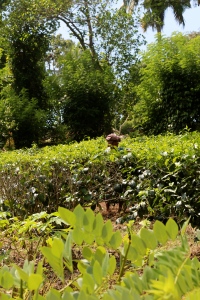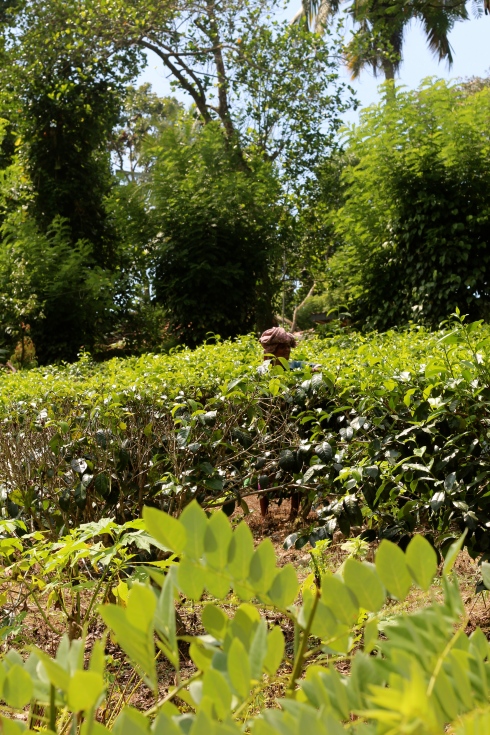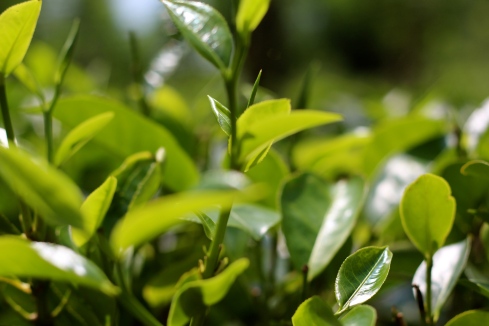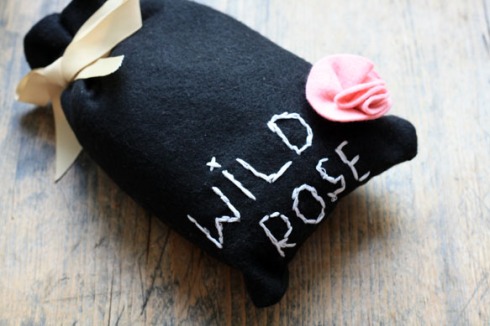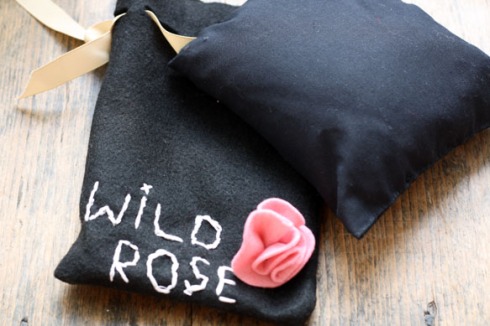So you think you hate green tea? Well, you’re not alone. We’ve met lots of people who had the same problem. Most of them would say “eurgh, it’s horribly bitter”. Even among the Lahloo Pantry staff there are a few examples of former green tea haters! Before they started, many of them told us they loved blacks, herbals and whites, but then whispered timidly that they didn’t really enjoy greens… Everybody likes different things, and for us it wasn’t a requisite to love every kind of tea, so no interviews were cancelled, if that’s what you were thinking…
But during their tea training, they all had the chance to try the over thirty Lahloo varieties… and, oh, surprise! All of them ended up adoring at least one of our green teas, whether it’s Nokcha (South Korean, biscuity and moreish), Genmaicha (a nutty brew made with toasted rice kernels and Sencha green tea), Mr. Shao’s Mao Jian (Chinese, with hints of asparagus), or Green Jasmine (the fragrant, floral and crisp Chinese infusion). And all of them, no exception, fell head over heels for the bittersweet Japanese matcha, especially when drunk as a matcha latte!
So what happened to turn the former hate for green tea into a sudden love?

If you’re a die-hard black tea fan and your experience of green tea hasn’t been very pleasant, maybe it’s time to reconsider it! Most green tea haters have only tried the tea-bagged variety, used the wrong temperature water and infused it for too long. The result? A truly horrid flavour and all the valuable nutrients lost!
The most important thing is, of course, the quality of the tea. The reason why we don’t like teabags is because they usually contain poor quality tea, reduced to powder, and because they’re restrictive and don’t allow the tea leaves to unfurl and release their natural flavours.
Aside from that, we’ve been researching the most common complaints and have come up with a guide specifically created for green tea haters… We’re hoping you want to give it a try! Let us put it this way: imagine that someone says they hate wine, but you discover they’ve only tried cheap wine with ice cubes and drank it from an old mug. Would you try and convince them that wine can be wonderful?
Dispelling green tea myths
Complaint #1: “Green tea is bitter”
This is to do with the green tea quality and with how you prepare it. To make the most of your green tea, place a heaped teaspoon per cup in your teapot. Don’t use boiling water, as it will burn the leaves and make it taste bitter, also destroying the antioxidants and nutrients that make green tea so good for you. Instead, let the water cool down for about two or three minutes. Then pour it over the tea leaves and never let it infuse for longer than 2 minutes –the optimum time is usually between 1-2 minutes, depending on the variety. Let us know what you think!
Complaint #2: “Green tea is bland”
If you’re used to hearty, full-bodied brews, it might take a while to get used to green teas, as they’re usually lighter on the palate. But you might want to try Genmaicha! This blend of toasted rice kernels with Sencha (Japanese green tea) was traditionally drunk by peasants, as it was a cheaper alternative to loose leaf green tea. Because of its delicious nutty flavour, it’s now enjoyed by all segments of society. Grounding, comforting and with a fuller flavour, it’s also high in vitamin B.

Nutty genmaicha!
Complaint #3: “Green tea is grassy”
Not all of it is grassy! Generally speaking, Japanese green tea is grassier than other varieties because it’s been steamed. If you prefer a sweeter alternative, try Nokcha, a deliciously biscuity South Korean green, moreish and full of character.
Complaint #4: “Green tea gives me a stomach ache”
This might indicate that you’re sensitive to tannins, a polyphenolic compound present in tea. If this is the case, using water cooled to the right temperature is essential, as hot water releases more tannins. Roasting also reduces the amount of tannins, so try Jade Cloud, a Chinese green with a chestnut aroma, picked in the spring, steamed and roasted.
Complaint #5: “Green tea is not naturally sweet”
We never add sugar to green tea, as it ruins its natural flavour. But if you have a sweet tooth, the floral edge of Green Jasmine, a crisp and naturally sweet green tea from China will conquer you. Or try Jasmine Pearls, a soothing blend of jasmine flowers and young tea tips

Lahloo Green Jasmine
If you’re a former green tea hater we’d love to hear from you! Tell us your story!
Thanks to all our Facebook and Twitter friends who contributed with their personal complaints. We hope this might help!
Tags: Green tea, green tea haters, green tea myths



